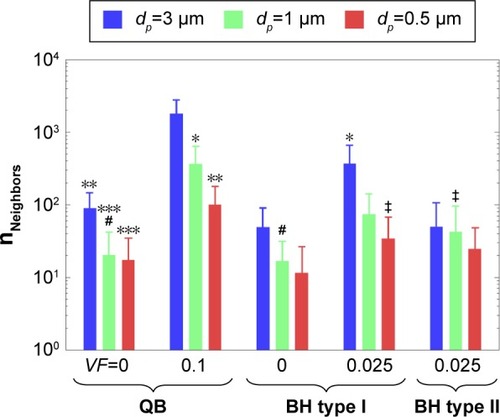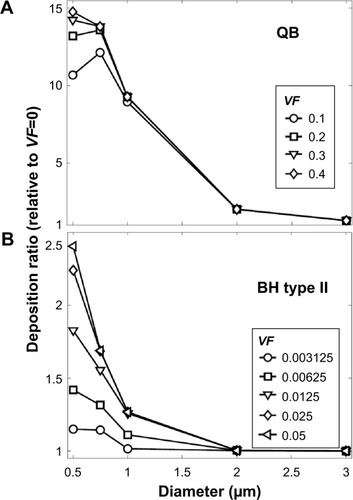Figures & data
Figure 1 Schematic of the acinar domain.
Notes: (A) Grey parts represent the alveolar cavities; highlighted in blue are the acinar ducts. The arbitrary gravity and magnetic fields are also shown. (B) Schematic representation of the asymmetric branching tree spanning six generations.

Figure 2 Non-dimensional “particle magnetization number” and magnetic force.
Notes: (A) Non-dimensional “particle magnetization number” describing the ratio of the magnetic force to the maximal drag force; (B) corresponding magnitude of the magnetic force exerted on the particles. Curves are shown for a QB maneuver; VF represents the magnetic material volume fraction.
Abbreviation: QB, quiet breathing.
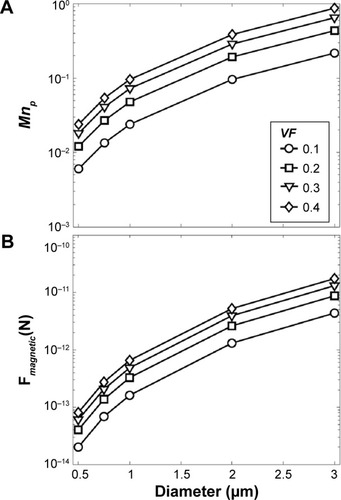
Figure 3 Deposition fraction in the acinar model as a function of particle size and different VF loading of magnetic material.
Notes: (A) QB maneuver (β=0.053, T=3 seconds); (B) BH type I maneuver, where magnet is constantly on (β=0.26, T=9.8 seconds, and BH duration =5 seconds); (C) BH type II maneuver, where magnet is on only during the breath-hold (β=0.26, T=9.8 seconds, and BH duration =5 seconds).
Abbreviations: QB, quiet breathing; VF, volume fraction; BH, breath-hold.
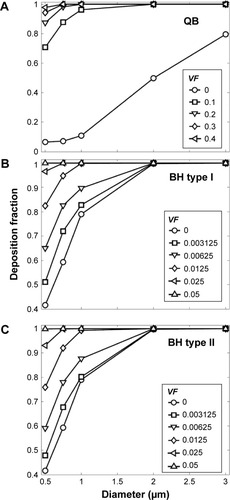
Figure 4 Characteristic deposition maps shown for different particle diameters (columns) as a function of different magnetic material VF loading (rows).
Notes: Deposited particles are colored according to the number of neighboring particles located within a 50 µm vicinity (nNeighbors). The domain inlet is also color coded, highlighting scenarios where particles have exited the domain. Note the logarithmic scale of visualization (ranging from 0 to 1,000), with some values beyond the legend maxima; particles are visually enlarged to improve visibility.
Abbreviations: QB, quiet breathing; VF, volume fraction; BH, breath-hold.
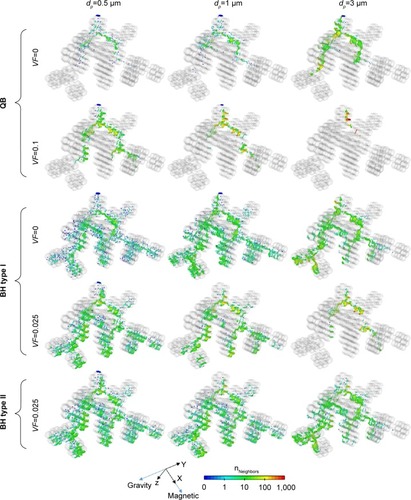
Figure 5 Quantification of particle dispersion in the acinar domain for sample particle sizes as a function of breathing maneuver.
Notes: nNeighbors and corresponding error bars (ie, standard deviation) are shown. Note the logarithmic scale; ‡ and # are the only statistically insignificant pairs. The pairs * and ** have a P-value <0.05 and *** marks have a P-value <0.01; for all other pairs, P<0.001. These values were calculated using a non-parametric Wilcoxon rank sum test.
Abbreviations: nNeighbors, mean number of neighboring particles; VF, volume fraction; QB, quiet breathing; BH, breath-hold.
